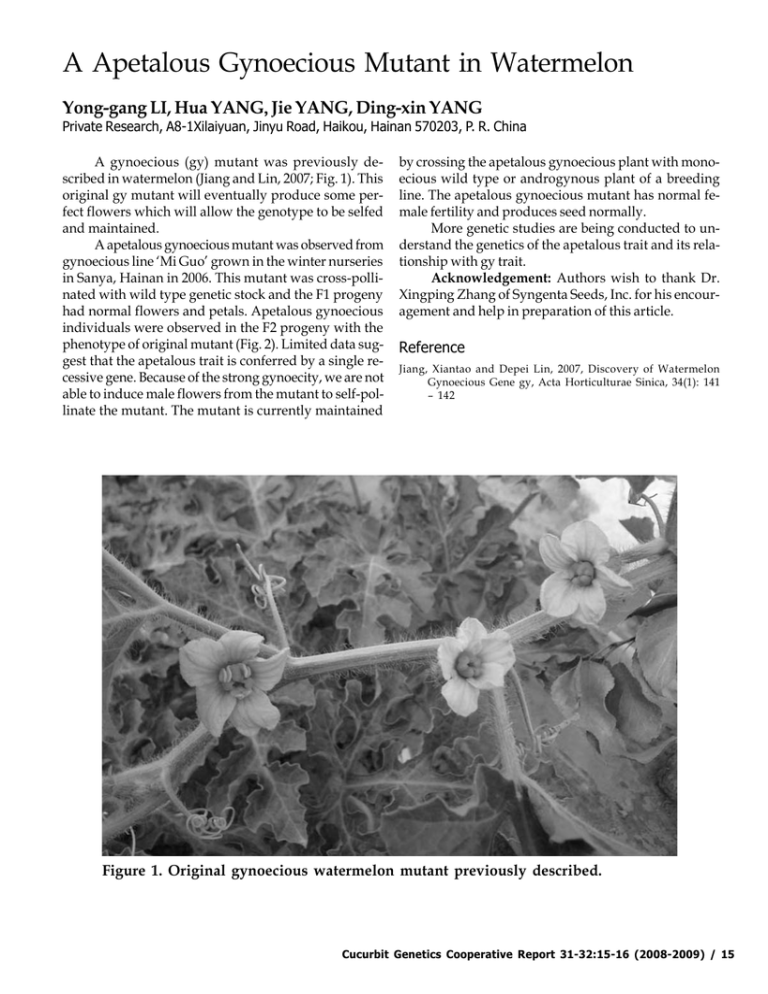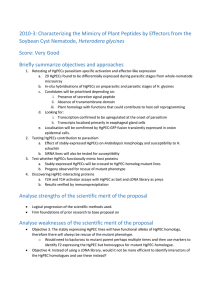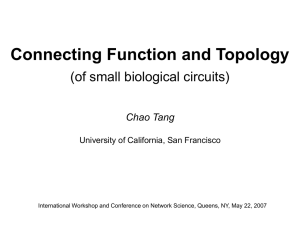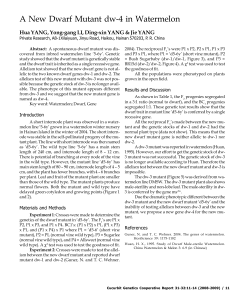A Apetalous Gynoecious Mutant in Watermelon Yong-gang LI, Hua YANG
advertisement

A Apetalous Gynoecious Mutant in Watermelon Yong-gang LI, Hua YANG,, Jie YANG, Ding-xin YANG Private Research, A8-1Xilaiyuan, Jinyu Road, Haikou, Hainan 570203, P. R. China A gynoecious (gy) mutant was previously described in watermelon (Jiang and Lin, 2007; Fig. 1). This original gy mutant will eventually produce some perfect flowers which will allow the genotype to be selfed and maintained. A apetalous gynoecious mutant was observed from gynoecious line ‘Mi Guo’ grown in the winter nurseries in Sanya, Hainan in 2006. This mutant was cross-pollinated with wild type genetic stock and the F1 progeny had normal flowers and petals. Apetalous gynoecious individuals were observed in the F2 progeny with the phenotype of original mutant (Fig. 2). Limited data suggest that the apetalous trait is conferred by a single recessive gene. Because of the strong gynoecity, we are not able to induce male flowers from the mutant to self-pollinate the mutant. The mutant is currently maintained by crossing the apetalous gynoecious plant with monoecious wild type or androgynous plant of a breeding line. The apetalous gynoecious mutant has normal female fertility and produces seed normally. More genetic studies are being conducted to understand the genetics of the apetalous trait and its relationship with gy trait. Acknowledgement: Authors wish to thank Dr. Xingping Zhang of Syngenta Seeds, Inc. for his encouragement and help in preparation of this article. Reference Jiang, Xiantao and Depei Lin, 2007, Discovery of Watermelon Gynoecious Gene gy, Acta Horticulturae Sinica, 34(1): 141 – 142 Figure 1. Original gynoecious watermelon mutant previously described. Cucurbit Genetics Cooperative Report 31-32:15-16 (2008-2009) / 15 Figure 2. Flower characteristic of the apetalous gynoecious mutant. Picture was taken from field grown plants. 16 / Cucurbit Genetics Cooperative Report 31-32:15-16 (2008-2009)








